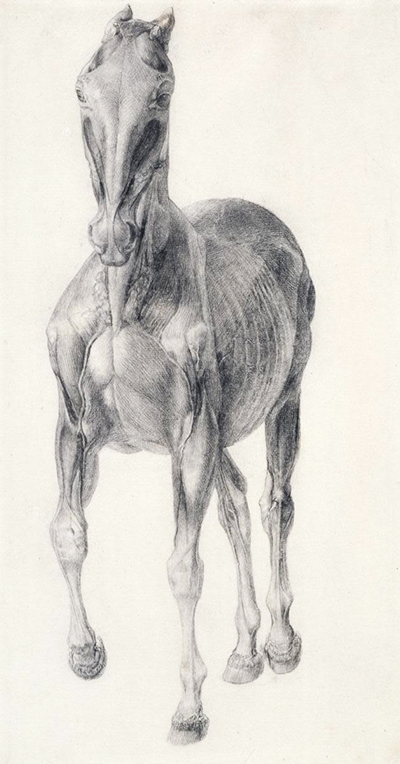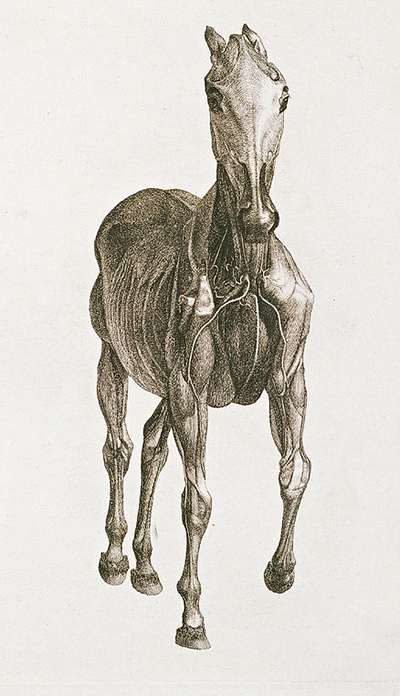The few drawings that remain from George Stubbs' career underline his talent in animal anatomy portraiture
There was a considerable studio sale in 1807 where many of his drawings were lost without trace, with little chance of the ever being re-attributed. Aside from this, his two key series of drawings were The Anatomy of the Horse and A Comparative Anatomical Exposition.
The majority of sketches found in this section were from these two substantial sequences of work, whilst others were individually commissioned pieces which included his famous Lemur drawings which now reside at the British Museum.
Drawings as Preparatory Work
Stubbs's famous horse paintings, such as Whistlejacket, would always have started out life as study drawings which would allow the artist to decide upon certain elements of his composition before initiating the oil painting itself. It was his study drawings which would have been sold off from his studio back in 1807.
Many landscape drawings were included in his sale as well as anatomy studies of many of the animals that can be found in his paintings, such as lions, monkeys, stags, buffaloes and cows. This eclectic mix of animal drawings reminds many of Picasso or Durer.
The Anatomy of the Horse
The Anatomy of the Horse was published by Stubbs in 1766 and offered a lifelike study of anatomy never seen before. The book would lead to a great number of high profile commissions as a result, and immediately marked his skills out as superior to those of other anatomical artists such as James Seymour, Peter Tillemans and John Wootton.
The work which followed enabled Stubbs to secure his financial future and perhaps the importance of these drawings on his own life is sometimes forgotten when put up against the likes of Whistlejacket and other oil on canvas paintings.
Continued research into animal anatomy by George Stubbs
The amount of research undertaken by the artist in order to ensure the accuracy of his drawings was extraordinary - skinning and removing muscles layer by layer, capturing each stage in his sketch book as he went. His location by a tannery in rural Lincolnshire meant there was a steady stream of available corpses for his work. It was a meeting of science and art, providing benefits in both areas for years to come.
The drawings themselves took 18 months but were not sufficient to find a publisher and so he was forced to engrave the illustrations which took a further eight years. The most rewarding achievement here is the accuracy of the finished artwork and the fact that the book remains in print today.
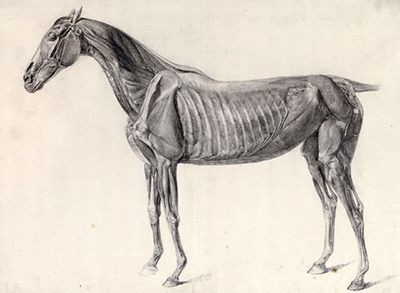
Anatomy of a Horse from the Side
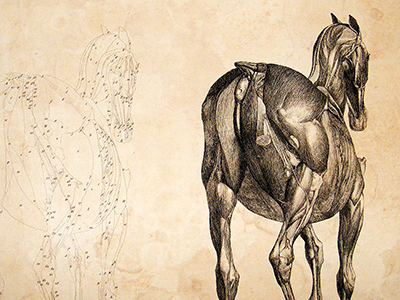
Etching for Anatomy of the Horse
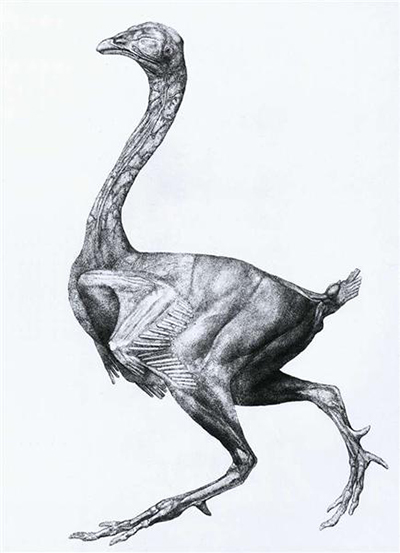
Study of a Fowl
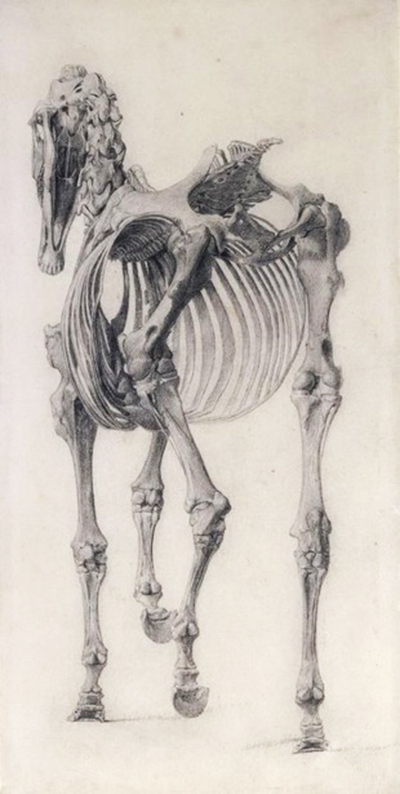
Drawing of a Horse from the Back
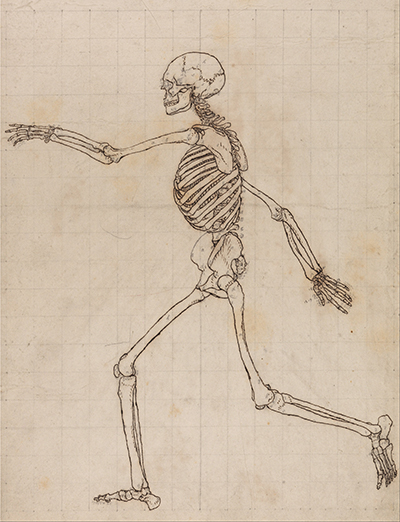
A Comparative Anatomical Exposition of the Structure of the Human Body
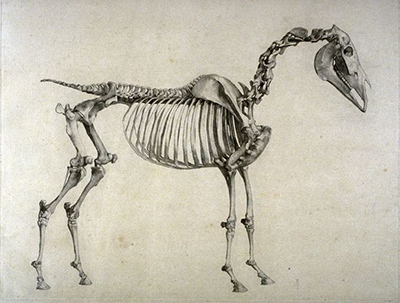
Second of Two Plates for the First Anatomical Table of the Skeleton of a Horse
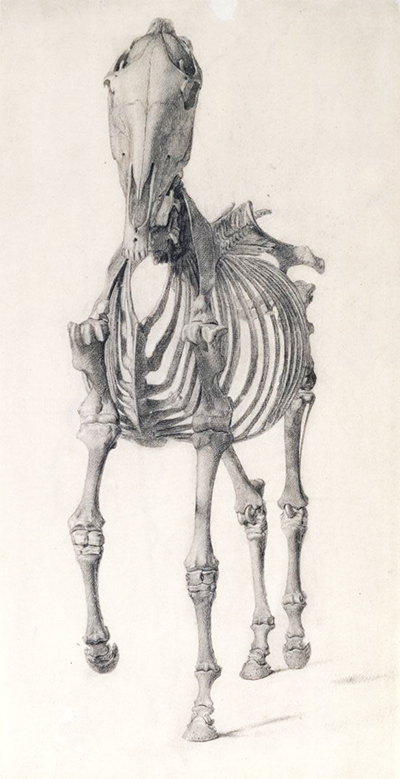
Finished Study for The Second Anatomical Table of the Skeleton of the Horse
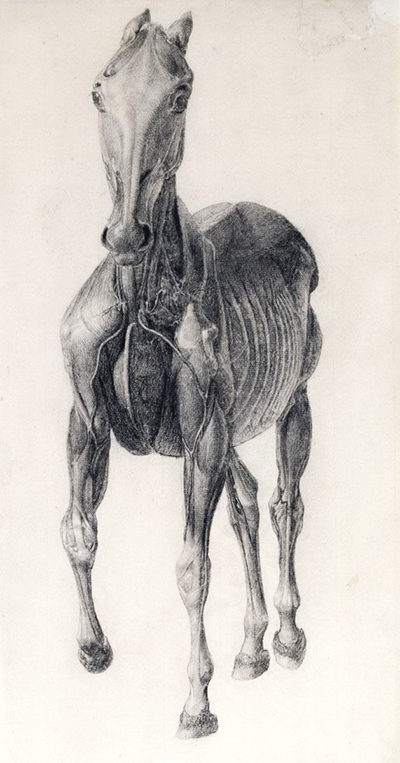
Finished Study for The Seventh Anatomical Table of Muscles of the Horse I
